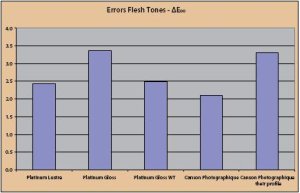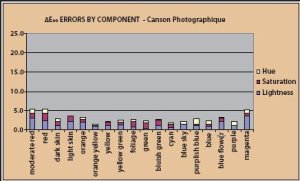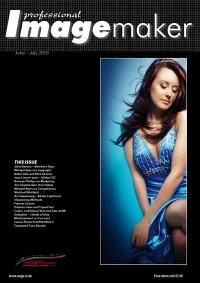articles/Paper/fourbaryt-page3
Paper Chase - The Four Baryt - part 3 of 1 2 3 4 5 6 7 8 9
by Mike McNamee Published 01/06/2010

We are unconvinced that this was the best settings arrangement. We certainly saw no head strikes but for the flatter, Lustre and Canson media we could probably have used Auto for the platen gap on this pair. The penalty for applying an additional dwell time was severe: the prints took 21m10s for an A3+ compared with 3 half minutes when we used high speed, 1440 and zero dwell time! It is a case of balancing out quality and timing. One camp says quality is worth the wait another may not have the time or inclination to wait. We observed no undue effects of not increasing the dwell time in later testing.
We made profiles using Monaco Profiler using 729-patch targets and then used the profiles with Relative Colormetric and BPC ON to make our standard audit prints.

Baryta
In general terms the 'baryta' papers are modelled on the traditional fibre-based, air-dried darkroom materials. These papers had a distinctive sheen to them (and indeed a particular smell). They were just short of a full gloss and certainly were without that perfect, shiny, ultra-high gloss of say a Cibachrome. Although such surfaces have their place, they are a little soulless for some photographers who prefer the more characteristic finish. It is a feature that remains much sought after - enough gloss to retain high detail, with some of the character of the substrate paper coming through the coating. Baryta is barium sulphate BaSO4 and is an almost pure white, highly inert chemical used to make coatings. An inkjet coating may contain baryta (a true baryta) or may be only a 'baryta-type' and not contain the mineral but still claim 'fibre base' qualities.
Please Note:
There is more than one page for this Article.
You are currently on page 3
- Paper Chase - The Four Baryt page 1
- Paper Chase - The Four Baryt page 2
- Paper Chase - The Four Baryt page 3
- Paper Chase - The Four Baryt page 4
- Paper Chase - The Four Baryt page 5
- Paper Chase - The Four Baryt page 6
- Paper Chase - The Four Baryt page 7
- Paper Chase - The Four Baryt page 8
- Paper Chase - The Four Baryt page 9
1st Published 01/06/2010
last update 09/12/2022 14:54:24
More Paper Articles
There are 56 days to get ready for The Society of Photographers Convention and Trade Show at The Novotel London West, Hammersmith ...
which starts on Wednesday 14th January 2026





